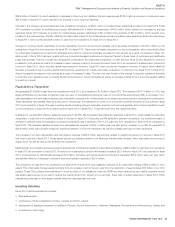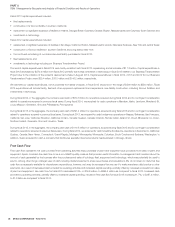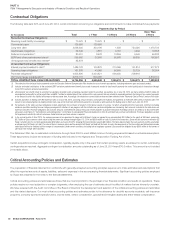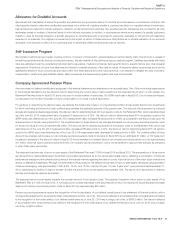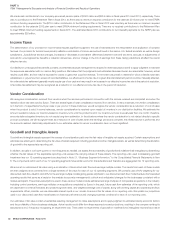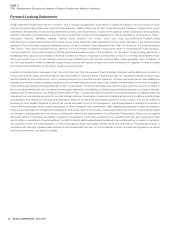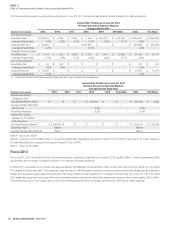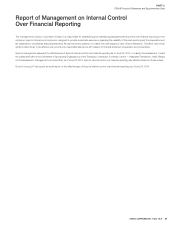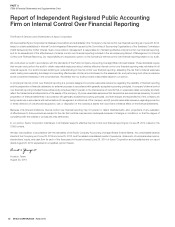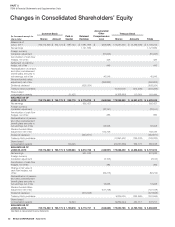Sysco 2014 Annual Report Download - page 57
Download and view the complete annual report
Please find page 57 of the 2014 Sysco annual report below. You can navigate through the pages in the report by either clicking on the pages listed below, or by using the keyword search tool below to find specific information within the annual report.
SYSCO CORPORATION-Form10-K 45
PARTII
ITEM 7AQuantitative and Qualitative Disclosures AboutMarket Risk
ITEM 7A Quantitative and Qualitative Disclosures
AboutMarket Risk
Interest Rate Risk
We do not utilize nancial instruments for trading purposes. Our use of debt directly exposes us to interest rate risk. Floating rate debt, where the interest
rate uctuates periodically, exposes us to short-term changes in market interest rates. Fixed rate debt, where the interest rate is xed over the life of the
instrument, exposes us to changes in market interest rates re ected in the fair value of the debt and to the risk that we may need to re nance maturing
debt with new debt at higher rates.
We manage our debt portfolio to achieve an overall desired position of xed and oating rates and may employ interest rate swaps as a tool to achieve that
position. The major risks from interest rate derivatives include changes in the interest rates affecting the fair value of such instruments, potential increases
in interest expense due to market increases in oating interest rates and the creditworthiness of the counterparties in such transactions.
Fiscal 2014
As of June 28, 2014, we had $130.0 million of commercial paper outstanding. Total debt as of June 28, 2014 was $2.8 billion, of which approximately
74% was at xed rates of interest, including the impact of our interest rate swap agreement.
In August 2013, we entered into an interest rate swap agreement that effectively converted $500.0 million of xed rate debt maturing in scal 2018 (the
scal 2018 swap) to oating rate debt. This transaction was entered into with the goal of reducing overall borrowing cost. The major risks from interest rate
derivatives include changes in interest rates affecting the fair value of such instruments, potential increases in interest expense due to market increases in
oating interest rates and the creditworthiness of the counterparties in such transactions. This transaction was designated as a fair value hedges since the
swap hedges against the changes in fair value of xed rate debt resulting from changes in interest rates.As of June 28, 2014, the scal 2018 swap was
recognized as an asset within the consolidated balance sheet at fair value within other assets of $4.8 million. The xed interest rate on the hedged debt is
5.25% and the oating interest rate on the swap is six-month LIBOR which resets every six months in arrears.
In January 2014, in contemplation of securing nancing and hedging interest rate risk relating to our assumption or re nancing of US Foods Inc. net debt
that will occur upon closing of the proposed merger (discussed in Note 4, “Acquisitions”), we entered into two forward starting swap agreements with
notional amounts totaling of $2.0 billion. We designated these derivatives as cash ow hedges of the variability in the cash out ows of interest payments
on 10-year and 30-year debt expected to be issued in scal 2015. These forward starting swaps were recognized as a liability within the consolidated
balance sheet at fair value within accrued expenses of $133.5 million.


